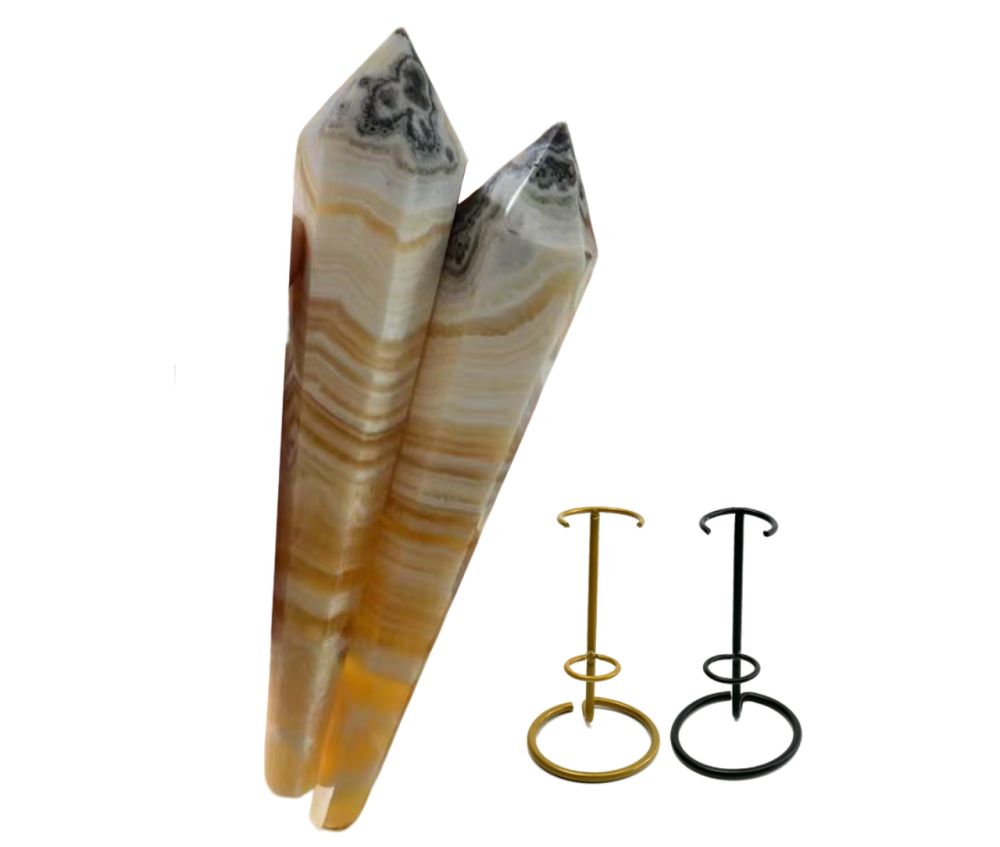We use cookies to make your experience better.
TimmersGems has a new website, existing customers also need to register again.
Yellow Calcite Points from Mexico, 10-15 cm in size and sold per kilogram.
Gemstone points have always been a hot item; with our new metal stands in 2 colours they come into their own even better.
Availability:
In stock
SKU
122370
The mineral calcite (also called limespar) consists mainly of the salt calcium carbonate (CaCO3) and is one of the most common minerals in the earth's crust. Calcium carbonate is formed when soluble calcium ions come into contact with CO2 (carbon dioxide forms a carbonate ion when there is a positive ion in a solution). Calcium carbonate is a poorly soluble salt, which causes the formed CaCO3 to precipitate; this occurs according to the following reaction: Ca2+(aq) + CO32-(aq) -→ CaCO3(s) Calcite is a common component of sedimentary rocks, veins and in deposits in hot springs and caves in karst areas (as stalactites). It is the mineral that forms limestone and is therefore the most common mineral of biological origin. Calcite is the main component of limestone, chalk and marble and is also an important component of marl, calcareous sandstone and limestone shales. Calcite is responsible for the chemical weathering of igneous and metamorphic rocks, which results in the formation of sedimentary rocks. Calcite is soluble in CO2-containing water under light pressure. As it falls into the air, rainwater absorbs the gaseous carbon dioxide, making it acidic. This acidic rainwater is able to dissolve lime. In underground currents, this material can be transported in solution until, after contact with atmospheric pressure, CO2 escapes and the calcite precipitates. This is how stalagmites and stalactites are formed in caves. In the past, the transparent Icelandic form of calcite, called Iceland spar, was used for the production of Nicol prisms. Some researchers assume that the Vikings navigated the seas using crystals of this mineral, which can accurately determine the position of the sun even in cloudy weather. Nowadays, limestone is mainly used in construction as a building element, for the production of lime and cement, while marble is used as a building and ornamental stone.
| Dimensions | 10-15 cm |
|---|---|
| Country of Manufacture | Mexico |












